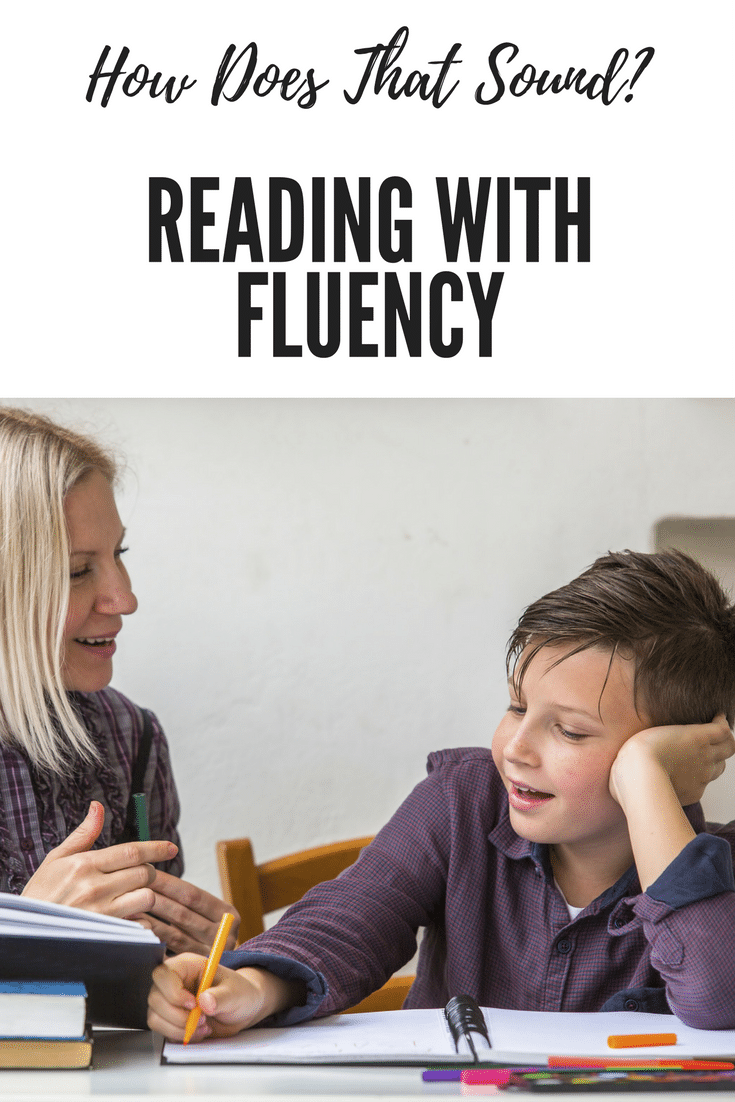To teach your students to read you must know where they are. It is important to understand their current instructional reading level (accuracy and comprehension combined) as well as their fluency level. If you are unsure how to test your students and gather this data, check out my recent article “See Jane Read.” Students below grade level need skills review and help to learn to read. Students at grade level need meaningful work to practice their reading abilities. Students above grade level need extension activities and ideas to stretch their reading.
[bctt tweet=”Students above grade level need extension activities and ideas to stretch their reading.” username=”EducatorsRoom”]
Think about people whom you enjoy listening to as they read aloud. There are people who draw you into the story and make you want to become a part of the page. What makes this happen? Fluency and voice play a large part in capturing an audience. This skill helps readers comprehend stories. If you are reading fluently then your brain is making sense of the story and traveling along a story line as opposed to R…O…B…O…T…I…C reading where you try to make sense of the words alone and get lost on the path.
It is important for students to see their own growth. Here is a chart with a suggestion for grade level fluency goals. Our district breaks these up by grade level so there are four goals per grade. I have students track their progress on their own. You can use a graph for each student which also ties in math standards; it is always great when we can multitask. A quick and simple way is to have each student create a graph using centimeter grid paper. The dates can be written along the bottom and the side should include and reach past their grade level goal. Once a week, have students read for one minute. They can do this with a partner. Each student uses the same passage (at their current reading level). One partner reads and the other marks any errors by crossing them out and times for one minute. If a word is inserted it does not need to be recorded. Then the students change roles (using a different passage). The students can now count the number of words they read in one minute and mark this on the graph. This growth will show students how their hard work is paying off or if they need to practice more. Once a month you need to check all students who are reading below grade level in fluency. Students at grade level and above can be checked quarterly. Discuss if there are any adjustments that need to be made and create new graphs each quarter as the fluency levels adjust each quarter as well.
When you have your students tested, a one minute cold read will do the trick, you have the information you need to know what they need to practice. There are programs you can purchase to help with fluency, such as six-minute solution, but there are other free things you can use too.
Here are some ideas on ways to practice, reinforce, and extend your students fluency in the classroom:
BELOW FLUENCY—Students need to read out loud. What they are reading is not as important as the fact that they are reading out loud. If you have a reading at home program, ask them to read aloud five minutes at home each evening. They can read to their parents, the mirror, the dog, their fish, a stuffed animal as long as they are reading out loud. Every day in the classroom, be sure they are spending five-ten minutes reading aloud as well. There are tools you can use to encourage this. Audacity is a free program you can download that allows students to record their voice. iTalk is an iPad app that does the same thing. Allowing students to record themselves lets them hear how they sound and see where they need to work. They also just love to hear themselves talk!
Provide poetry for students. Have them read poetry or song lyrics to practice fluency. Allow them to listen to authors read their poems (do a Google search) or provide authentic literature for students to listen to. Read aloud, have older students read to younger students, use online resources such as Storyline Online. Teach students to read in phrases. A great way to help with this is to have students highlight lines of poetry. They should use two different colors and highlight alternating lines. As they read, point out that each line (highlighted color) should be read together, fluently, smoothly. This will illustrate how reading words in phrases makes reading sound more pleasant.
AT GRADE LEVEL—Students can record their voices as well. They should also read poetry and song lyrics. Free Reading has some passages that will help students practice fluency and also time in other skills. Use the same resources as above to record their reading and allow students to listen to themselves to hear their fluency and expression.
At this level students should also focus on reading with expression. Reader’s Theatre is another resource for students to use to practice fluency. Read, Write, Think has a great lesson and here is a link to scripts grades K-8.
Reading comic strips is a good way to practice using expression and voice. The short strips allow students to read and reread the passages to practice playing with expression and voice. Drama is a fun way for students to play with their voice and explore becoming different characters and playing different roles.
ABOVE GRADE LEVEL—Fluency needs look different at this level. Students here need to move beyond the repetition of practice and apply their skills. This can be done by writing and performing their own poetry, taking a text they are reading and making it into a Reader’s Theatre script, or recording stories for younger students to listen to. Story Creator is a free app that allows students to take a picture and record their voice to create a book. Educreations and Show Me are both apps that allow for pictures to be taken and your voice to be recorded. These creations can then be shared via email or online. Giving students an audience provides purpose for writing and allows them to use fluency, voice, and expression.
Fluency is a reading skill that must be taught and practiced. Read aloud to your classroom, talk about reading in phrases, provide strong examples by published author’s reading their own work, ask students to list what makes listening to a story enjoyable and then rank this list. Providing a variety of reading material and fluency activities your students can practice meaningful work with everyone focused on the same task. Pull out old poetry books, bring in newspapers and magazines, and check out some comic books from the library. Allow your students to read, read, and read some more. Now, how does that sound?





